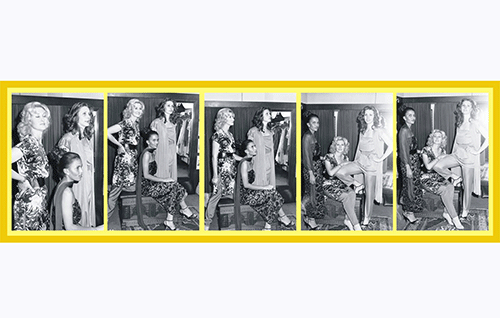Renowned fashion journalist Nina García once said “Fashion is an expression of time, of a place, of history. It’s putting things into context”.
To get her view on the Namibia fashion landscape over the past 32 years since Namibia’s independence, VIBEZ! engaged celebrated Namibian designer Cynthia Schimming.
With over 25 years’ experience in the local fashion industry, Schimming is, without a doubt, a pioneer of Namibian fashion.
She opened her company, C’est Moi Design studio, seven years after Independence. But her involvement in the local industry in Namibia started as a model in the vibrant fashion movement shortly after Independence in 1990.
“We had industries like Swakara (now Nakara), which specialised in fur, and the big clothing shops like Wecke & Voigts, Inge’s Boutique, Foschini, Truworths as well as designers from South Africa, etc that used local models to advertise their clothing,” she recounted.
Early Years
Born in the apartheid era, Schimming and a few other Namibians left for South Africa in the mid-80s to study fashion design.
Later, some furthered their fashion studies at Unam.
The College of the Arts, at the time, focussed on music, dance, visual art and craft, and fashion was only introduced later.
“Although we were a small group of qualified fashion designers, we had designers who did not have the papers, but were very talented in their own right. Most of them learned the skill at the industries where they were working.”
The internationally-renowned fashion designer added that back in the day, they were extremely competitive and driven since they had designers’ competitions, where the quality of work, design, innovation and creativity were sometimes judged by international designers.
“You received prizes like showcasing at world expos, trips to Italy, and showcasing at fashion weeks globally,” she explained.
Growth
The retired fashion design lecturer at the College of the Arts and Unam admitted that over the years, the local industry has witnessed some growth, citing the establishment of the Fashion Council of Namibia in 2017 to coordinate and formalise the industry. She also mentioned the Windhoek Fashion Week, which was established six years ago, as well as the Katutura Fashion Week founded in 2019 as great boosts for local designers to showcase their talents and skills.
Schimming also pointed to the founding of the Museum of Namibian Fashion as another big accomplishment.
The museum is virtual at the moment, but will be opening as a physical museum in Otjiwarongo in June 2022. It intends to showcase past, present and future fashion artefacts from Namibia, while looking at creating workshops, residency and other activities that will benefit fashion designers and seamstresses in terms of training and income-generating opportunities.
She applauded the fact that sewing and fashion design courses are now offered by several institutions, citing the vocational training centres that now offer courses up to Level 4 under the Namibia Training Authority.
This has resulted in thousands of Namibians producing clothes for the local market.
In terms of the availability of fabrics to make clothes locally, she commended the fact that Namibia still receives quality fabrics from SA, noting that she buys material when travelling abroad.
“China Town offers a variety of fabrics and accessories too, but unfortunately, the quality is not the best.”
Challenges
On current challenges within the industry, the clothing technologist pointed out that the Covid-19 pandemic, which hit Namibia in 2020, changed fashion and ‘the look’ tremendously.
“It forced us to re-think and reset to consumer psychology and sustainable fashion.
Along with the extended time of uncertainty and the new norm and concept of ‘working from home’, active wear and masks replaced the glamorous garments. Even fashion shows were virtual.”
However, now that things are more relaxed, the Lifetime Achievement award recipient at the 2019 Katutura Fashion Week said designers will have to invest in mastering the skill of good quality and creativity if Namibia wants to be part of the new slogan “Africa, your time is now”.
“The time has come for Africa, Namibia included, to go back and explore where we come from.
The time is now to re-tell our ethnic stories, and to have a narrative approach to ethnic identity through fashion,” she urged.
The way forward
On the way forward, Schimming, who last year was a guest researcher at the Ethnologisches Museum Berlin, Germany, implored all designers to combine their creativity and technology to take fashion to the next level, warning that there is no more time for “fly-by-night designers” who have not read the ‘Ultimate 12-step guide for fashion designers’.
While in Berlin, she studied the history, materials and techniques of the Namibian collection held at that museum.
She has artwork currently being displayed at the Humboldt forum in Berlin as part of the permanent collection in the African Hall. The exhibition depicts a faceless Otjiherero woman in a glass cage, dragging a cloth with the faces of Namibian leaders and victims of the genocide on it.
Last year, she worked as costume designer on German film ‘Ein Platz an Der sonne’ that was shot on location in Namibia.


